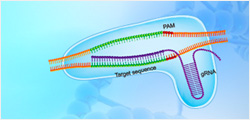TNFR1/CD120a/TNFRSF1A, His, Cynomolgus
Tumour necrosis factor alpha (TNF-α) is a pleiotropic cytokine with both injurious and protective functions, which are thought to diverge at the level of its two cell surface receptors, TNFR1 and TNFR2. In the setting of acute injury, selective inhibition of TNFR1 is predicted to attenuate the cell death and inflammation associated with TNF-α, while sparing or potentiating the protective effects of TNFR2 signalling.
| ¥3500 | |
| Z04928-100 | |
|
|
|
|
|
|
|
|
|



































